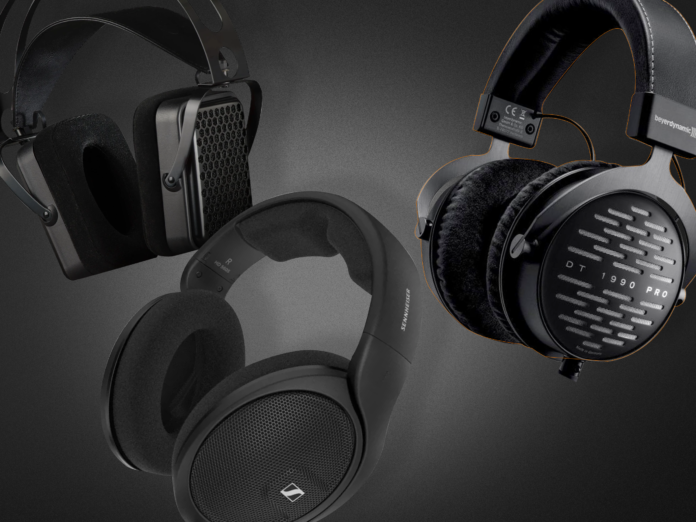Over the years, we have seen the release of a lot of open-back headphones. From audiophiles to casual listeners, this type of principle offers a lot of qualities for a variety of sonic scenarios. If you’re unfamiliar with open-backs, they’re over-ear headphones with open grills on the earcups. This allows sound to be pushed inward and outward from the diaphragm, resulting in a sound signature that has the opportunity to reveal a more spacious image. It’s almost like having a speaker attached directly to your ears. These are headphones meant for a more homely environment, not to be taken out on your morning commute for example.
Open-back headphones occupy many different price ranges. There are affordable models like the Grado SR80e, and uber-high-end headphones like the Focal Utopia, or Final D8000 Pro. No matter the price, each headphone will always have its own quirks and specific uses. Today, we will be looking at open-back headphones as a tool for sound mixers. What are the advantages, and which models best get the job done?
Open-Back Vs Closed Back For Sound Mixing
Closed-back dynamic headphones have been a staple of many studios for years. A few that come to mind are the Sennheiser HD 280 Pro, Sony MDR 7506, and Beyerdynamic DT 770 Pro. The goal of these headphones is to portray an accurate representation of what your track actually sounds like, with a flat, uncolored timbre. They’re especially good for recording, as you’ll be able to hear exactly what is being tracked without having sound leak into the mic. An open-back headphone can’t accomplish that.
Ideally, open-back headphones are best used in post-production, after all the tracks have been recorded onto the timeline.
Open-back Headphones vs Monitors
Although closed-backs have been used in plenty of mixing scenarios, open-backs have a few major advantages when it comes to efficiency. There’s a reason why professional sound mixers prefer monitors over headphones. Studio monitors are a perfect reference for where everything is in the mix spatially and volume-wise. They offer a closer, more critical view of what’s going on in your mix. However, monitors need to be in the right room in order to be accurate. That means your room must consist of the right isolation and absorption in order to work sufficiently.
Open-back headphones do not need the right room. Ideally, you’d still be in a relatively quiet environment, but you will not need the specific sound panels or dimensions in order to receive an accurate response. The best open-backs give you the luxury of feeling like you’re closer to the mix with a closed-back and delivering the open sensation of monitors. I won’t kid you though, in most mixing scenarios monitors are still king, but open-backs work as an alternative reference. If you’re worried about how valid open-backs are for production, just the other day I watched a video going through some of the processes of restoring movies for the Criterion Collection, and part of that is remastering the stems from the original film. The studio engineer wore open-back headphones throughout the whole process.
5 Open-back Headphones for Mixing
Now for the reason, you’re here. I have compiled a variety of open-back headphones that I think are an absolute must-buy for production. They range from affordable to high-end so that there’s an option for everyone. Let’s take a look at which headphones I think would make a great addition to your production space.
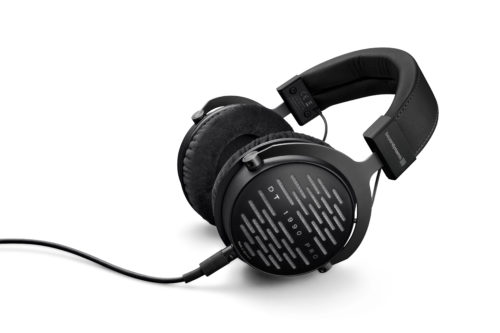
Should we start with a classic? Beyerdynamic is known for making some of the finest studio headphones around. The DT 770 is a major staple of studio spaces I have seen, being used for both recording and monitoring. The DT 1990 is its open-back relative, combining the DT 770’s detailed reference sound signature with the advantages of an open-back principle. Here, you’ll get a natural output, close to what monitors will give you. This is achieved by its excellent build quality, integrating Beyerdynamic’s Tesla driver with a selection of “analytical” and “balanced” earpads. For $599, what you get is one of the most reliable sound signatures available on an open-back headphone. The 250 Ohm impedance is a pretty strong resistance though, so you’ll definitely need an outboard headphone amplifier to give the DT 1990s some sufficient juice. Alternatively, the DT 990 is also a very good option.
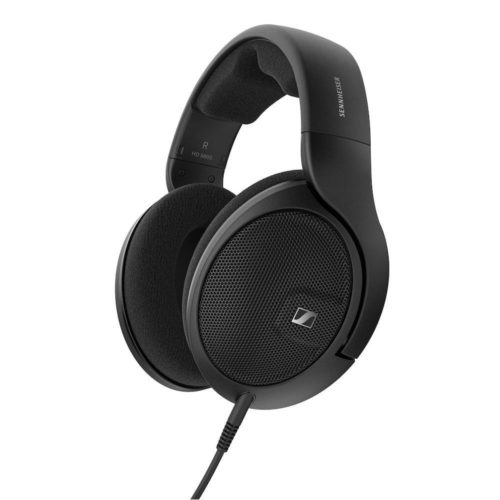
Here is a more recent option that’s more affordable if the DT 1990 is a little bit too much. Sennheiser is another manufacturer found in most studios today, but usually, other open-back models are recommended, such as the HD600 or 650. These are great options, but I wanted to spotlight the 560s for a specific reason. Out of all of their open-back models, I believe the 560s presents its reference with a much flatter response. In effect, the output is going to appear a lot blander, and without much texture. In my opinion, this invites more attention to the analytical details of the frequency response, encouraging you to add the texture to the mix yourself. For me, this is the open-back headphone I’d rather rely upon for my mixes, as the others feature more colorization than I’d prefer. Plus, the HD560s is only $199, which is great for mixers who may be on a budget.
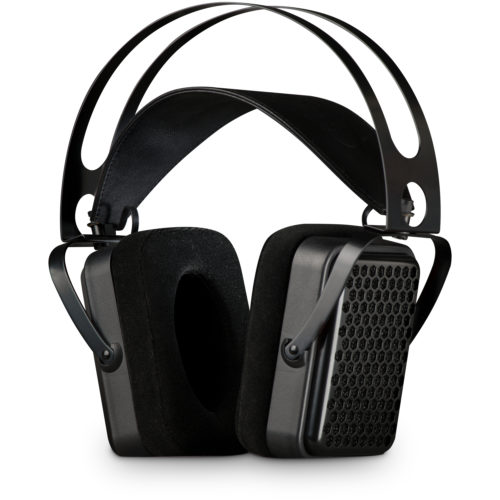
This is one of the odder selections I’ve made for this list, but I’ll tell you why this may be a good option. If you haven’t heard of Avantone, they are mainly responsible for designing Mixcubes that you might see in some studios. They act as a secondary reference to speaker monitors to show how the mix might sound on more common consumer sound systems. With their reputation in pro audio, not only have they designed a reference open-back, but they made it planar. The goal of this planar system is to achieve a better sense of accuracy than a simple moving coil can, with much faster transient response.
On the flip side, you may lose some noise floor, and you may want to hear that when you’re making decisions in your mix, but the frequency response is still flat. I also want to point out that the Pro Planar is the most comfortable option on this list. Not only is the planar driver significantly less heavy than a dynamic, but wearing them provides hours upon hours of an almost weightless experience. This makes long mixing sessions a much easier experience when you don’t have to worry about ear fatigue. At $399 this one is hard to beat, as not only will you be getting an accurate reference, but the luxury of an audiophile experience. A perfect hybrid.
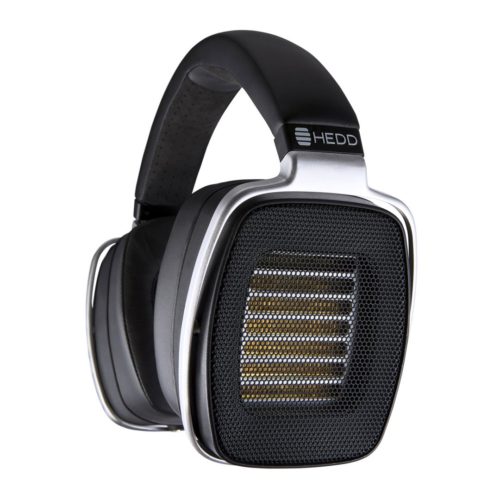
If you thought the Avantone Pro Planar was interesting, wait until you hear about the HEDDphone. Like the Pro Planar, this is quite the unorthodox pick, but I thought I would highlight it as a viable option for a few reasons. One of the main reasons being that as an open-back headphone, this is the closest you’re going to get to having studio monitors directly on your ears, and I mean that literally. The HEDDphone’s ear cups are almost the size of a small set of monitors. In direct contrast to the Pro Planar, these headphones are going to seem very unappealing due to their gigantic nature, but there are some positives to using these monsters as a reference headphone for studio mixing.
First of all, the HEDDphone is the only model out there to use an air motion transformer, an electrodynamic transducer that is commonly used in HEDD Audio’s own studio monitor line. This makes transient response as fast as planar while delivering a full range of frequency. What you get is a ridiculously natural and accurate output that will absolutely highlight all the details you need when in a mixing scenario. Other than its gargantuan size, the only other downside is the price. HEDD is not fooling around with this technology, so it’s priced at $1,899. However, once you have the HEDDphone, it might be hard to really go back to anything else.

Lastly, we have another high-end headphone from a manufacturer that also specializes in studio monitors. Focal is notorious in the audiophile community for having some of the best high-end headphones around today, open and closed-back. The Clear is one of their most acclaimed models, and earlier this year they released the Clear MG Professional, a variation of the Clear name specifically for a studio setting. The Clear MG Pro uses an m-shaped magnesium driver for greater tonal balance and a more full spectrum of frequency. Like the HEDDphone, Focal brings over materials used in their monitors for their speaker drivers, bringing them closer to a studio reference experience.
The build of these headphones is also so solid that each Focal headphone literally uses the same exact construction minus the Utopia. They provide incredible comfort for long mixing sessions and are a solid alternative to the HEDDphone if the monstrous ear cups really bother you. The cold, flat sound signature offers an uncompromised look into what is going on in your mix, providing an expansive stage for critical listening. Though they’ll run you less than the HEDDphone at $1,490, it’s still a considerable price compared to most studio headphones out there. However, there’s still not a lot of headphones out there as accurate and sophisticated as the Clear MG Professional.
Summary
These selections are only a taste of what’s out there in terms of open-back headphones for mixing. Some of these picks might seem out of the ordinary, but I wanted to show how diverse the market really is, consisting of both affordable and high-end options that are all viable for a studio setting.
Discuss what open-back headphones you’re using on our forums here.
Find the best price at Audio 46.
Compare the ranking of various headphones, earbuds and in-ear monitors using our tools.
Discuss this, and much more, over on our forum.
---MAJORHIFI may receive commissions from retail offers.


